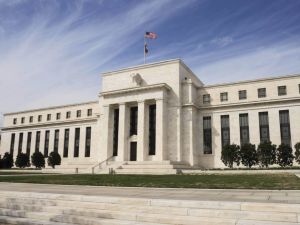Recently there has been a lot of discourse about ESG investments, but the central question still remains – can “doing good” really drive returns? The ESG revolution is redefining how we used to view investments, and the results are here to stay.
But what does this acronym stand for? ESG simply stands for Environmental, Social and Governance. These three broad categories are used to describe how responsibly or sustainably an organisation is run.
Is a company transitioning to renewable energy or setting carbon-reduction targets? That falls under Environmental.
How strong are its health and safety standards? Are equal opportunities being provided? How fair are the wages of the workers? These questions fall under the Social aspect.
Finally, what about the leadership quality? Or the diversity and independence of the board, or whether policies are in place to prevent misconduct and corruption? This forms part of Governance.
Simply put, ESG factors carry immense weight because strong and transparent practices in these areas help companies build trust, attract loyal customers and employees, manage risks, and stay resilient in a rapidly changing world.
For investors, understanding ESG metrics can highlight how environmental or social issues might affect a company’s value or risk, which in turn can influence long-term returns.
Yet, a common challenge when analysing ESG portfolios is deciding which metrics to use. Examples include implied temperature rise, carbon intensity, fossil-fuel revenues, exposure to controversial weapons, or third-party ESG ratings from providers such as MSCI.
With so many definitions and benchmarks, comparing funds can quickly become complex, which is why a consistent, transparent methodology is essential.
A matter of long-term value
Moneyfarm first introduced its ESG portfolios in 2020, aiming to apply strict sustainability criteria while reducing the risk of greenwashing – in other words, ensuring that the funds included genuinely meet their stated ESG objectives.
Over time, the focus has evolved. Rather than simply maximising ESG scores, we now also assess how different screening methods affect performance and diversification.
ESG funds vary in how strict their criteria are. Some use screened strategies that remove the most controversial companies, while Socially Responsible Investing (SRI) and Paris-Aligned Benchmark (PAB) funds apply deeper ethical and carbon limits. These differences may sound subtle, but they can lead to very different results, which is why our continuous due diligence is vital.
In practice, we have gradually shifted from stricter SRI funds to Climate Transition Benchmark (CTB) strategies. CTB funds focus on helping companies lower their carbon footprint over time rather than excluding them outright. This more flexible approach supports the global transition to a low-carbon economy while keeping portfolios well diversified.
Across Europe, the ESG investment landscape is evolving. ESG exchange-traded funds (ETFs) now account for about €650 billion in assets (source: ESG Moneyfarm Review), yet the share of new inflows has slowed sharply compared to 4-5 years ago. This reflects a more mature market: investors are moving away from chasing ESG trends and instead embedding sustainability as a core long-term principle. Recent flows have noticeably been concentrated in screened funds, including CTB and PAB, which are strategies that combine clear environmental goals with diversified, long-term exposure.
ESG integration is expected to continue evolving: from a marketing label to a core element of sound investment practice. Long-term investing has always relied on patience, diversification, and conviction. Integrating ESG simply extends that philosophy: recognising that sustainable business practices and strong governance help create lasting value.
Please remember that when investing, your capital is at risk. The value of your portfolio with Moneyfarm can go down as well as up and you may get back less than you invest. Past performance is not a reliable indicator of future performance. The views expressed here should not be taken as a recommendation, advice or forecast. If you are unsure investing is the right choice for you, please seek financial advice.
*As with all investing, financial instruments involve inherent risks, including loss of capital, market fluctuations and liquidity risk. Past performance is no guarantee of future results. It is important to consider your risk tolerance and investment objectives before proceeding.





